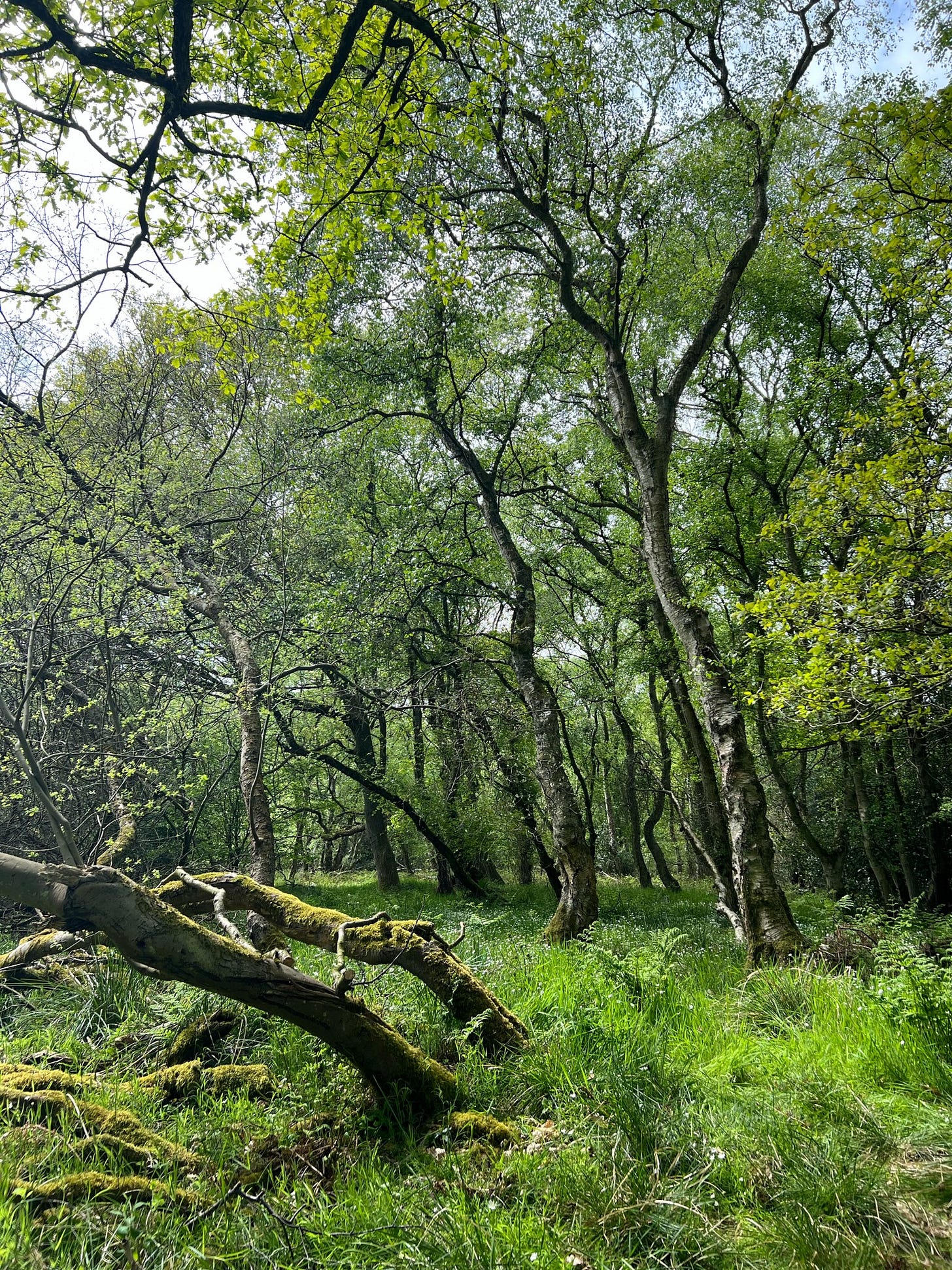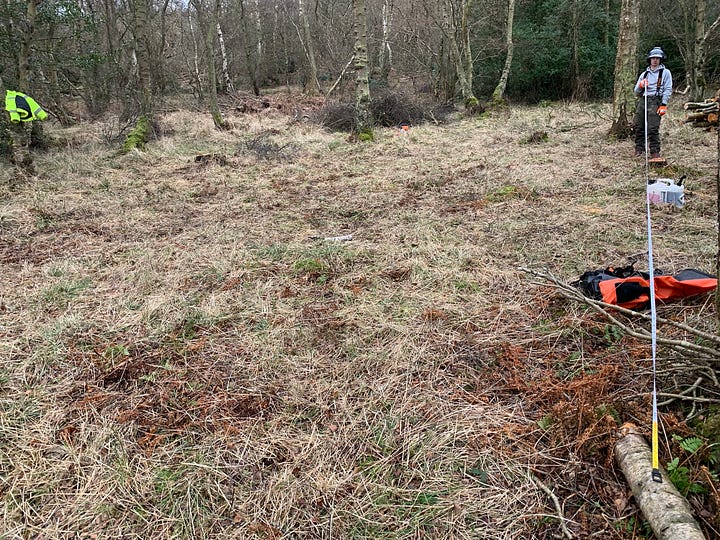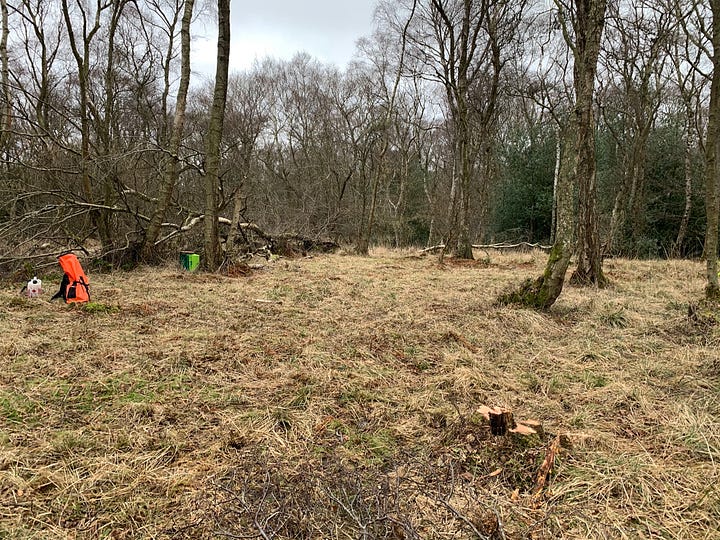The Woodland Management Plan
In order to ensure our woodland thrives into the future, a plan is needed and the forestry commission needs to know about it.
The woodland & the plan.
Last year we came into possession of a 3.3 hectare section of semi-ancient woodland in a larger 80 hectare site. The woodland is a huge part of what I will be doing with Life of Treedom. There is small page on the Life of Treedom website about it that will give you the general idea, but I will be producing a lot of content about the woodland. However, with any form of ancient woodland comes the responsibility of stewardship. In these modern times of ours, to ensure that we are good stewards of the woodland, a woodland management plan is the way we demonstrate good stewardship.

What is a woodland management plan?
A woodland management plan is a document that contains a number of actions designed to bring about certain desired objectives to a woodland. Plans may cover periods as little as five years, or span multiple decades. A good plan takes into account external issues such as changes to laws and future climate projections as well as social issues. As with everything (🙄) the UK Government has guidance to follow on managing ancient woodland. As far as government guidance goes, this specific guidance feels well balanced and reasonable – which is nice.
Woodland owners are under no legal obligation to have woodland management plan. The UK Forestry Commission estimate that 41% of woodlands are either unmanaged or no management plan has been registered any given woodland. A woodland that is correctly managed is more likely to thrive and to maximise the impact it can give to local ecology and other important outputs such as wildlife, amenity and conservation.
In the UK, there are standardised formats for woodland management plans and if you intend for the UK Forestry Commission to consider your woodland as managed, then it must be in a standardised format. There are two formats currently in use; a less detailed version (only for woodlands under 10 hectares) and a detailed version (only for woodlands greater than 3 hectares) – also compatible with applications for various grants.
The first question you must ask yourself when producing a woodland management plan is whether or not you want your woodland to be officially considered to be activity managed. If the answer is yes, then you must use one of the UK Forestry Commission formats. If the answer is no, then the format of your management plan is up to you. However there are certain caveats you have to bear in mind if you intend on "flying solo" (eg felling & restocking) which I will look at later on in the year.
Why have a woodland management plan?
There is a line of conservational philosophy that would argue that no management of a woodland is the preferred approach. The theory is that by removing humans from the woodland, the inherent natural processes will re-establish themselves and it is thought this is ultimately better for the woodland. I don't doubt there is a point in this philosophical approach and to a certain extent I can understand it. However the downside of this approach is that it requires the removal of humans from the woodland which is exactly the opposite of our intention as we wish to be firmly in our woodland.
So which version of a plan will be being producing? As we are new to this, initially we will be producing a "pre-plan" which will allow us to get up to speed on all of the things that we need to understand. Once we have this plan, we will then work on completing the the longer form forestry commission version. Our reasons for doing so are that we both want to be able to apply for relevant funding and we want to have our woodland classified as actively managed. I also want the experience of going through this process as I intend to offer this service to others as part of the services through Life of Treedom.
We’ll be following the UK Forestry standard as close as we can but it’s important to acknowledge that forestry and woodlands have two distinctly different primary objectives. Forestry is aimed at producing timber where as woodlands are typically orientated around ecology. They’re like siblings who have different careers – they kind of get on, but they can also rub each other up the wrong way and end up disagreeing. So if we find that we need to deviate from the forestry standard in service to the outcomes of a woodland then we won’t feel bad about doing so.
How did decide on objectives for our woodland management plan?
Whilst we may not know how the next twenty years of ownership will unfold, we do know what our current objectives are as we venture into these first two decades of ownership.
The first set of objectives (and the most important) is to retain the "ancientness" of the woodland. We will do this by means of risk assessing the impacts of all work and outcomes against a framework designed to ensure that our impact is both positive and aligned to retaining the ancient qualities of the woodland.
Our second set of objectives are based around creating amenity value. The first order of business is creating a dedicated camp so that we can spend as much time as possible in our woodland. Amenity value is a primary objective for us because the easier it is for us to spend time in our woodland the more we embed ourselves in our woodland and the more learn about the local ecology. By having a dedicated camp, it ensures that our footprint remains as light as possible within our woodland so we can keep the disturbances to a minimum. This is a short term objective and we are aiming to have the camp up and running for summer 2023 and we will be documenting the process as we go along.
Our third set of objectives are based around small scale, sustainable economic production from various woodland goods, crafts and products. This income will fund the on-going costs of implementing our woodland management plan over the coming years. This objective is a short to medium-term objective in so much that we can market and sell much of the materials that are sustainably harvestable such as holly for wreaths, fresh birch branches for besoms and other annually occurring woodland resources.
Our forth and final objective for our current plan is conservation and ecology. In the longer term we want to ensure that there are a range of ages in our tree stock so that as veteran trees fall into deadwood, there are others to take their place. The first order of business in this objective is to perform full inventory of all of our tree stock that logs age, condition and location. We will also identify veteran trees that require canopy space and ensure that some of the more light hungry birches are not outcompeting veteran oaks for resources.
What's next?
The next steps are to map out the woodland. We've already gotten to know the woodland a little bit and already have a few areas we're familiar with. We've already identified an area for the camp that has an already relatively open canopy but we will have to take out a few birches to open it up enough for the camp. We'll be making sure to compensate this in our restocking activities. The main reason for doing the camp before the plan is finished is that with somewhere to camp and work we will be able to get spend more time in the woods. This will allow us to get the plan completed by summer 2023.
Here’s a spoiler of the site we’ve selected for the camp. The woodland feels like a different place in winter and quite desolate. I’m very excited to watch it spring into spring this year!




Hi again!
That first picture is so beautiful -- there is nothing like the almost hysterical greenness of spring! I just love it.
This is such interesting reading for me; your project ... and approach to it :-) I will not inherit much money, but the only thing I want to spend it on is buying land, forest, woodland. I dream of a small woodshop in the forest. I could die contented there -- a woodlander.
And you have such beautiful trees over in England! I'll have to hug the southern coast of Norway if I want to be among our deciduous friends ... not that I mind a manly pine, but the fir / spruce that covers most of our country are just sad and dark and looks like an incitement to a drunken axe murder. I'm rambling ... because I'm hungry and making dinner. I'll be back for more when I've got time!